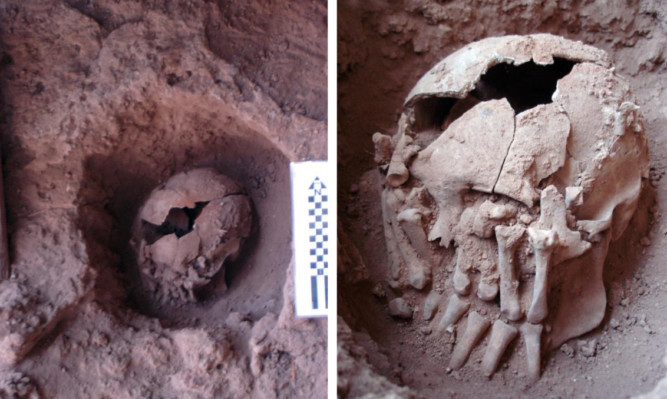Experts from Dundee University have unravelled the mystery surrounding a decapitation half a world away 9,000 years ago.
Professor Sue Black of the university’s Centre for Anatomy and Human Identification (CAHID) was able to help archaeologists figure out how the victim was decapitated when only primitive, stone age tools were available.
The skull was found by Andr Strauss from the Max Planck Institute for Evolutionary Anthropology, who was excavating the Lapa do Santo site in eastern Brazil.
The rest of the skeleton has not been found but Strauss was able to painstakingly uncover the skull, which has been partially crushed due to being buried for thousands of years.
The remains which date from around 7,000BC were in a bizarre “Vogue”-style pose, with the left hand over the right side of the face, fingers pointing up, and the right hand over the left hand side, digits pointing down.
The next oldest known act of decapitation in South America dates from around 6,000 years later, which left archaeologists wondering how hunter-gatherers living in a simple society with just a few simple tools managed to carry out such an act. It was then that Strauss turned to Professor Sue Black, director of CAHID, for help.
She compared the remains to those of a modern-day case of decapitation that had resulted in the same kind of fractures in the neck. This suggested the head was partially cut off but had to be manually pulled and twisted to remove it completely from the neck.
“We were the forensic team that identified the manner in which the decapitation most likely occurred, said Professor Black.
“Examining the skull, we saw fractures consistent with hyper-extension of the head and rotation. There would also have been cutting but the fracturing of the neck bones indicated a violence to the region.”
Archaeologists do not know why the Lapa do Santo man was decapitated. They have ruled out the possibility of it being so the head could be used as a trophy, while signature isotopes in his bones suggest he was a local rather than an outsider or rival, leaving some to speculate that the arrangement of the hands indicated some form of symbolic ritual.
Anthropologist John Verano of Tulane University, New Orleans, said there is “great symbolism” in the way the hands had been place, suggesting dualism.
The paper has been published in the PLOS-ONE Journal and is in National Geographic’s Gory Details blog.
